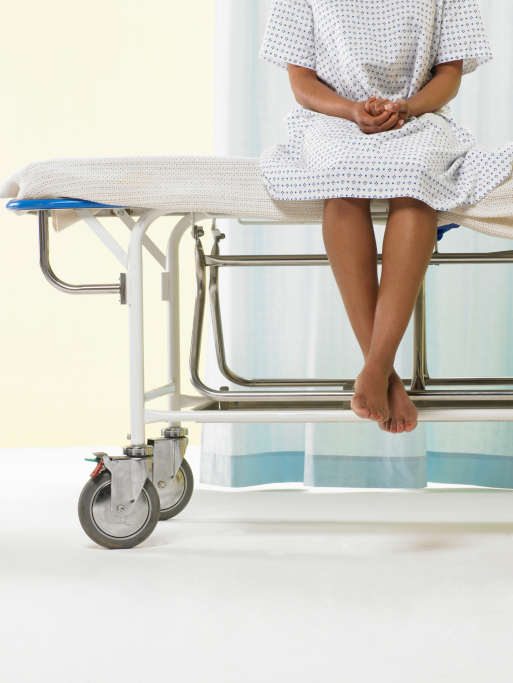
It has been some time since my first pap smear, but I remember the day like it was yesterday. I was nervous. The exam room was cold, the table hard and the paper gown was barely covering my unmentionables. I remember looking at my phone thinking it must be broken because I had to have been waiting for at least a half an hour.
Just as I had convinced myself that I would get dressed and leave, putting the exam off for another year, the nurse practitioner walks in. After asking a list of questions she asks me to put my feet in the stirrups and lay back. And out of nowhere she pulls out this speculum. OK wait! Let’s talk this through.
MUST READ: Cervical Cancer: 6 Things You Need To Know
Thinking back on that experience, I am glad that I mustered the nerve to complete the exam because little did I know, four years later I would be diagnosed with pre-cancerous cells on my cervix from a regularly scheduled pap. Let’s put it into perspective. There are very few screening tests that can identify cancer in its early stages. Fortunately, pap smears are one of them.
Pap smears, while mildly inconvenient, are extremely necessary and well worth the time if it means preventing an easily detectable and highly curable cancer. Since the introduction of the pap smear in the 1940’s, the incidence and death rate due to cervical cancer in the U.S. has declined by 60%. Real talk, it’s really an exam that separates the women from the girls.
Here is what you need to know about pap smears and what to expect in the exam.
Annual Well Woman Exam
Gynecologists, family medicine and primary care physicians are all equally equipped to perform a general well woman exam. Annual well woman exams are considered maintenance and are covered by all insurance plans. The well woman exam consists of detailed questioning regarding your sexual and reproductive health history, followed by a breast exam, a pelvic exam and a pap smear.
MUST READ: 3 Herbs To Detox Your Uterus
For the Pap smear, your legs are separated and placed in stirrups. Most examination rooms utilize plastic dilating devices called speculums to examine the cervix. The speculum is inserted into the vagina, slowly opened to allow for the physician to shine light and visualize the cervix. This part of the test can be mildly uncomfortable; utilizing the smaller speculum and lubricating the speculum with water prior to insertion is enough to alleviate any discomfort.
The physician takes a brush and lightly brushes the cervix to retrieve a sample of the cervical cells and may even do a quick swab for sexually transmitted disease such as chlamydia, gonorrhea and trichomonas at the same time. Within a matter of minutes the Pap smear is done. Some mild spotting may occur after the exam. Results usually are back within 2 weeks and you should expect a call or letter from your doctors office with your results. It’s just that simple.
Latest Exam Guidelines
Guidelines regarding frequency of pap smears are constantly changing but the newest guidelines recommend the first pap smear at the age of 21. Women age 21-29 with negative results in the past can extend their pap smear frequency from annual to every 3 years. Women older than 30 years of age, with a negative co-test for the HPV virus, can extend their screening frequency to every 3-5 years. Screening usually stops at the age of 65 or after total abdominal hysterectomy with a few other exceptions of which your doctor can discuss with you.
Medicine has really come a long way. We know that HPV is the virus that causes cervical cancer and we also have identified the 15 high risk types out of the 100 subtypes of HPV that can cause cervical cancer. The FDA-approved vaccines, Gardasil and Cervarix, protect against 2 of the 15 high-risk subtypes. And while the vaccines are a step in the right direction, the vaccine is associated with some serious side effects and is no way a substitute to regularly scheduled pap smears.
While being a woman comes with its own inherent responsibilities, just know that getting regular scheduled pap smears it one of the simplest ways that you can maintain your health. Right behind an apple a day, it really is the next best thing that you can do for yourself this year.
 Visit BestiesMD.com for more!
Visit BestiesMD.com for more!









